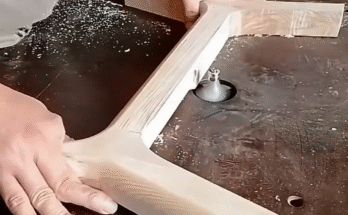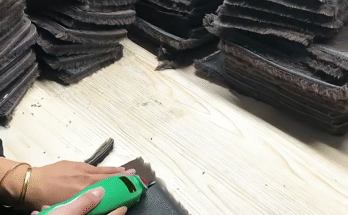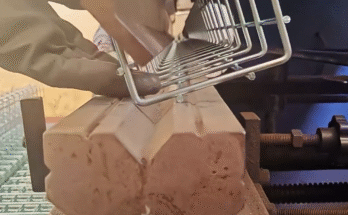Ultra-thin screen windows, often found in modern homes or specialized enclosures, offer excellent visibility and protection against insects while maintaining a sleek aesthetic. However, their delicate nature makes them susceptible to tears, punctures, or detachment from their frames. Repairing these screens requires a gentle touch and precise techniques to restore their functionality and appearance without causing further damage.
Here’s a step-by-step guide to the process of fixing ultra-thin screen windows:
Step 1: Assessment and Preparation – Understanding the Damage
Before attempting any repair, a thorough assessment is crucial to determine the extent of the damage and the best repair method.
- Identify the Type of Damage:
- Small Punctures/Tears: Minor holes or rips in the mesh.
- Larger Tears/Holes: Significant damage that might require patching or replacement.
- Detached Spline: The screen material has come out of the frame’s channel (spline groove).
- Bent/Damaged Frame: The screen frame itself is compromised.
- Clean the Screen: Gently wipe down the damaged area and the surrounding screen with a soft, damp cloth to remove any dust or debris. Allow it to dry completely. A clean surface ensures better adhesion for patches or a smoother re-installation.
- Gather Tools and Materials:
- For Small Tears/Punctures: Screen repair patches (adhesive or sew-on), clear nail polish, or specialized screen repair glue.
- For Larger Tears/Replacement: New ultra-thin screen material, spline roller tool, new spline (matching the original size), utility knife or scissors.
- General Tools: Soft cloth, rubbing alcohol (optional, for cleaning), small brush (for glue application).
Step 2: Repairing Small Punctures or Tears – Discreet Solutions
For minor damage, a simple patch or sealant can often suffice.
- Adhesive Screen Patches:
- Cut the patch slightly larger than the hole, ensuring it covers the damaged area completely.
- Peel off the backing and carefully press the adhesive side onto the clean screen, centering it over the hole.
- Gently smooth out any air bubbles, ensuring good contact with the screen mesh.
- Clear Nail Polish or Screen Repair Glue:
- For very tiny holes that don’t warrant a patch, apply a small dab of clear nail polish or specialized screen repair glue directly over the hole.
- Use a small brush or toothpick to spread it thinly, just enough to bridge the gap.
- Allow it to dry completely. This creates a transparent seal.
Step 3: Re-attaching a Detached Screen (Spline Repair) – Re-tensioning the Mesh
If the screen has come out of its frame, re-installing the spline is key.
- Remove Old Spline (If Necessary): If the spline is damaged or brittle, carefully pull it out of the spline groove using a small screwdriver or awl.
- Position the Screen: Lay the screen frame flat on a clean, stable surface. Place the screen material over the frame, ensuring it extends beyond the spline groove on all sides.
- Start a Corner: Begin by gently pressing a small section of the screen into the spline groove at one corner using the convex (rounded) wheel of a spline roller tool.
- Insert New Spline: Place the new spline over the screen material, aligning it with the groove.
- Roll the Spline: Using the concave (grooved) wheel of the spline roller, firmly and steadily roll the spline into the groove, pushing the screen material ahead of it. Work your way around the perimeter of the frame, applying even pressure.
- Important: As you roll, gently pull the screen material taut in the opposite direction of your rolling to ensure it’s tight and wrinkle-free. This is crucial for ultra-thin screens to prevent sagging.
- Trim Excess Screen and Spline: Once the spline is fully seated around the entire perimeter, use a utility knife or sharp scissors to carefully trim away the excess screen material that protrudes beyond the spline groove. Also, trim any excess spline.
Step 4: Patching Larger Tears or Replacing the Screen – More Extensive Repairs
For significant damage, a larger patch or full screen replacement might be needed.
- For Larger Tears (Patching):
- Cut a new piece of ultra-thin screen material, significantly larger than the tear (e.g., 1-2 inches overlap on all sides).
- Carefully align the patch over the tear.
- Sew-on Method: Use a thin, strong thread (e.g., fishing line or clear nylon thread) and a fine needle to carefully stitch the patch onto the existing screen, creating small, discreet stitches around the perimeter of the patch.
- Glue Method: Apply a thin bead of specialized screen repair glue around the edges of the patch and press it onto the screen. Place weights on the patch while it dries to ensure good adhesion.
- Full Screen Replacement:
- Remove Old Screen: Carefully remove the old, damaged screen and spline from the frame.
- Clean Frame: Clean the spline groove thoroughly.
- Cut New Screen: Cut the new ultra-thin screen material to size, leaving several inches of overlap on all sides of the frame.
- Follow Spline Re-attachment (Step 3): Proceed with the spline re-attachment process as described in Step 3, ensuring the new screen is evenly tensioned.
Step 5: Final Inspection and Care – Ensuring Longevity
After the repair, a final check and ongoing care will maintain the screen’s integrity.
- Visual Inspection: Carefully inspect the repaired area for any loose edges, wrinkles, or missed spots. Ensure the screen is taut and flat.
- Gentle Cleaning: Clean the entire screen gently with a soft brush or vacuum with a brush attachment to remove any remaining dust.
- Avoid Harsh Chemicals: Do not use abrasive cleaners or harsh chemicals on ultra-thin screens, as they can damage the delicate mesh.
- Careful Handling: Remind users to handle ultra-thin screen windows with care to prevent future damage, especially when opening or closing them.
Fixing ultra-thin screen windows requires patience and a delicate touch, but by following these steps, you can effectively repair common damages and extend the life of your screens, maintaining clear views and effective insect protection.



